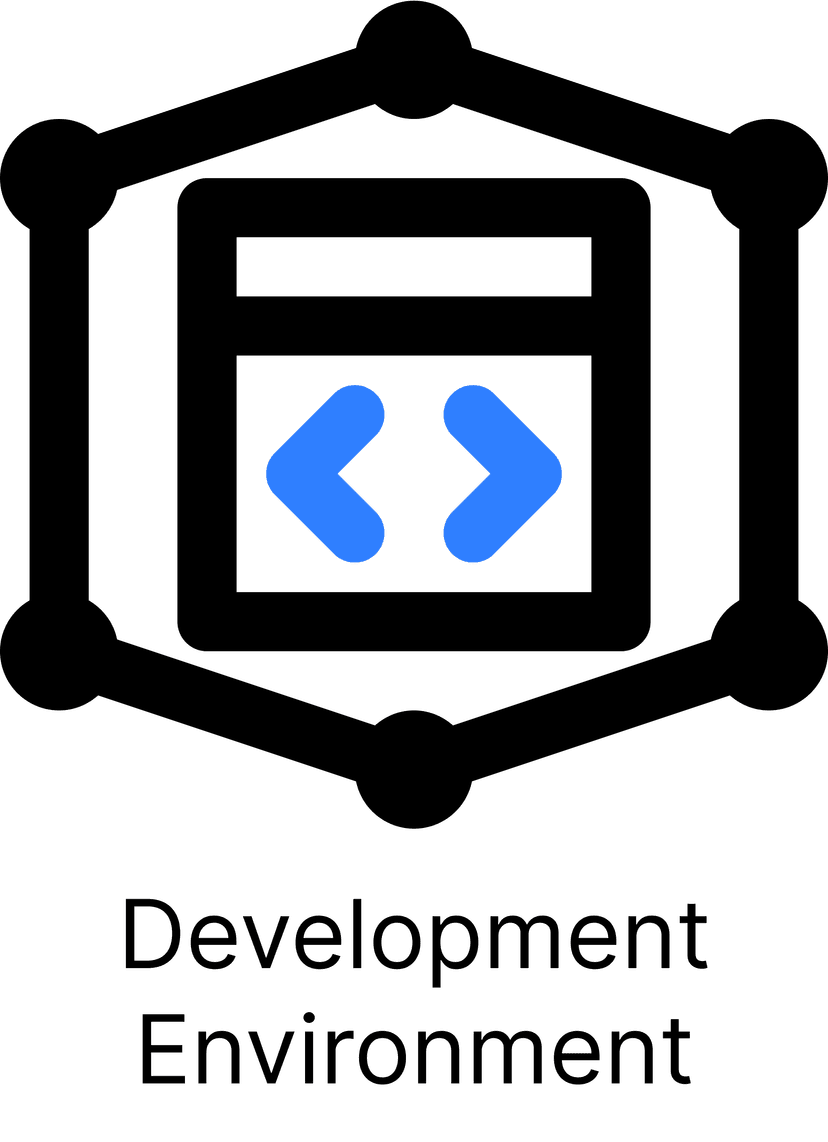Development Environment

What is a development environment?
Definition:
A development environment is the collection of processes and tools that are used to develop the source code for a program or software product.
Analogy:
A development environment is like a carpenter's workshop.
A carpenter's workshop will house all of the tools and materials needed to build a house, and include space for them to build some of the basic components and test out new approaches.
In the workshop, the carpenter might have a workbench, saws, drills, and other tools, as well as wood, nails, and other materials that they need in order to build the full product.
In the workshop, the carpenter may put together base components of pieces of wood or measure out different pieces. The carpenter can practice using different tools as well as test out new materials.
In other words:
A development environment is a place where a software developer can write, test, and debug code, as well as access documentation and other resources that are needed to build the application.
Why is a development environment important?
It's one thing to know what a development environment is, but that is worthless if you don't know why you should know what a development environment in the first place. Let's break down the importance of this tech term based on two high level categories. We'll walk through an explanation as well as provide a score, 1-10, that shows you how much you should care about a development environment.
Pre-Product: 3/10
The first will be if you do not have a product yet. This means that you don't have a physical product. Maybe you're in the ideation phase, or maybe you're almost ready to start development. Whichever it is, we'll get into why a development environment is important and why you should or shouldn't care about it if you do not have a product.
If you don't have a product, you don't need to worry too much about a development environment just yet. Be sure that you or your developer has one set up as once you are ready to go, it will be important to first start coding in your developer environment.
Live-Product: 9/10
The second category is if you do have a live product. Maybe you just launched your business or maybe it's been live for years and you're continuing to improve its quality. Regardless of the scenario, if your product is live, a development environment carries a different weight.
A development environment is incredibly important and something you should be aware of. Ensure that your developer is leveraging a developer environment when first starting off to code as you want to be sure they are responsible with how they approach coding. You don't want to code everything in production or staging, as that will make things harder to track, de-bug, and build.
Examples of a developer environment
So you know what a developer environment is, by definition. You know if you should care about it or not depending on your situation as a business/company/product. To dig in deeper, we will walk through some examples so we can make sure you really have a solid grasp on a developer environment.
There are many different types of development environments, and the specific tools and resources included in a development environment can vary widely depending on the platform and the goals of the software being developed. There are five types of developer environments we'll walk through:
Integrated development environments (IDEs):
Integrated development environments are comprehensive software suites that include a code editor, a compiler or interpreter, a debugger, and other tools that are commonly used for software development. Examples of IDEs include:
- Visual Studio: Visual Studio is a popular IDE developed by Microsoft. It supports a wide range of programming languages and platforms and includes features such as a code editor, a debugger, and support for version control.
- Eclipse: Eclipse is an open-source IDE that is widely used for Java development, but it also supports a variety of other languages and platforms. It includes features such as a code editor, a debugger, and support for plugins that can extend its functionality.
- Xcode: Xcode is an IDE developed by Apple for macOS. It is primarily used for developing applications for the iOS, iPadOS, macOS, watchOS, and tvOS platforms and includes features such as a code editor, a debugger, and support for testing and debugging on multiple devices.
Command-line environments:
These are environments that are accessed through a command-line interface (CLI) and typically include a code editor and a compiler or interpreter, as well as other tools like version control systems and package managers. Examples of command-line environments include:
- Bash: Bash is a popular Unix shell that is widely used on Linux and macOS systems. It includes a command-line interface for interacting with the operating system, as well as a programming language that can be used to write shell scripts for automating tasks.
- PowerShell: PowerShell is a command-line shell and scripting language developed by Microsoft for Windows. It includes a command-line interface for interacting with the operating system, as well as a powerful scripting language for automating tasks and interacting with other software.
- Command Prompt: Command Prompt is a command-line interface that is included with Windows. It allows users to enter commands and run programs by typing them into the interface, and it is often used for advanced troubleshooting and system administration tasks.
Cloud development environments:
These are environments that are hosted in the cloud and can be accessed from any device with an internet connection. They often include a code editor, a debugger, and other tools, as well as the ability to deploy applications to the cloud. Examples of cloud development environments include:
- AWS Cloud9: AWS Cloud9 is a cloud-based IDE developed by Amazon Web Services. It includes features such as a code editor, a debugger, and support for a wide range of programming languages and frameworks. It also integrates with other AWS services, making it easy to deploy applications to the cloud.
- Google Cloud Shell: Google Cloud Shell is a cloud-based command-line environment that is provided as part of the Google Cloud Platform. It includes a code editor and access to a variety of tools and resources for developing applications on the Google Cloud Platform.
- Azure Cloud Shell: Azure Cloud Shell is a cloud-based command-line environment provided as part of the Microsoft Azure platform. It includes a code editor and access to a variety of tools and resources for developing applications on Azure.
Mobile development environments:
These are environments specifically designed for building mobile applications and typically include tools and resources for building user interfaces, accessing device features, and testing and debugging apps. Note that some mobile development environments are also integrated development environments (IDEs). Examples of mobile development environments include:
- Android Studio: Android Studio is an IDE developed by Google specifically for Android development. It includes features such as a code editor, a debugger, and support for building and testing applications on a variety of Android devices.
- Xcode (see IED above)
- Visual Studio (see IED above)
Game development environments:
These are environments specifically designed for building video games and often include tools and resources for rendering graphics, playing audio, and handling user input. Examples of game development environments include:
- Unity: Unity is a game engine and development platform that is widely used for building 2D and 3D games. It includes a code editor, a debugger, and support for building and testing games on a variety of platforms.
- Unreal Engine: Unreal Engine is a game engine and development platform developed by Epic Games. It is used to build a wide range of games, including AAA console and PC titles. It includes a code editor, a debugger, and support for building and testing games on a variety of platforms.
- GameMaker Studio: GameMaker Studio is a game development platform that is primarily used for building 2D games. It includes a code editor, a debugger, and support for building and testing games on a variety of platforms. It is designed to be relatively easy to use, making it a good option for beginners or for building simple games.
Key Takeaways:
- A development environment is a place where a software developer can write, test, and debug code, as well as access documentation and other resources that are needed to build the application.
- If you don't have a product yet, start to familiarize yourself with what a development environment is in preparation.
- If you do have a product or are actively building, it is essential that your team is using development environments.
- There are five main types of development environments: integrated development environments, command line environments, cloud development environments, mobile development environments, game development environments.

